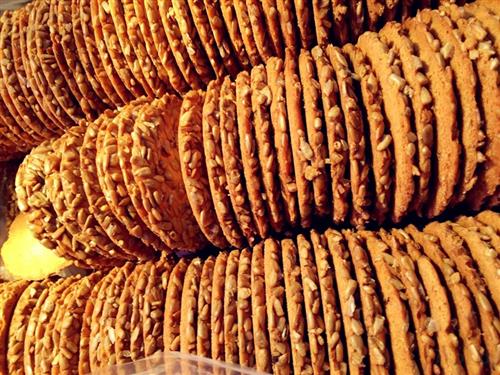Nutrition of various cookies
Biscuits are a common snack, and both adults and children love to eat. However, there are a variety of cookies available on the market, and various types of cookies claim to have different types of nutrition. So, what exactly does a variety of cookies have? Soda cracker Cellulose is very low and B vitamins disappear. The soda crackers contain less sugar, contain less oil, and add yeast. They have the unique flavor of fermented products and are often considered to be the most nutritious in the biscuits. They are also used by many people for breakfast. However, this is not the case. Baking soda is added to achieve the layering effect. Baking soda reduces the B vitamins in the flour and may even eliminate it. 2. Wafer cookies High calories, low density, and unobservable eating. Different from other biscuits, wafer crackers are based on millet flour (glutinous rice flour) and starch, which are slightly more nutritious than white flour. However, the cream and fat content of wafers is very high, with an average of 60 calories per piece, and they are low in density and are not enough to eat, so eating too much is not easy to detect. In fact, the three chocolate wafers have more than 200 calories. 3. Cookies High sugar, high fat, low protein. Sugar and fat in cookies are higher than other kinds of cookies. A small piece of cookies tends to have more calories than a glass of strawberry juice! The crisper cookies are made from “low-gluten flour,†which is a low-protein wheat flour, which is not as high as the protein in taro. Whole wheat crackers Increased nutrition while also increased the amount of fat. For whole-wheat crackers with high cellulose content, because the taste of cellulose is poor, in order to make up for the taste, manufacturers often add a lot of oil to the biscuits, resulting in higher oil content. But if the so-called whole-wheat, oats, rye, and grain biscuits, which are advertised on the packaging, are ranked in the bottom of the list, it may not be the real cereal biscuits. 5. Sandwich cookies "Heart" is additive synthesis, no fruit raw materials. Sandwich biscuits are sandwich-baked foods that contain various sugars, fats, or jams as the main raw material between two biscuits. The “heart†in the sandwich cracker uses additives for pursuing taste and color, generally flavors and colors, and rarely adds any fruit ingredients, such as orange-flavored sandwich biscuits. Instead of adding oranges, the additives are blended into one, although the additives are not It must be harmful, but it will not bring nutrition. It may not be as good as simple cookies. So no matter how delicious the biscuits are, they can only eat lightly, and most of the biscuits are very dry. After consumption, it is easy to have “hot air†(lighted) needles. Therefore, in the ordinary life, it can only point to the various sandwich cookies. Coarse grain usually refers to rice, wheat, corn, soybean and potato five crops other than the grain and bean crops. The main are: sorghum, millet, buckwheat (sweet buckwheat, buckwheat), oats (naked oats), barley, millet, barley millet, barley millet, grain amaranth and beans (kidney beans), mung beans, adzuki beans (adzuki beans, adzuki beans), broad beans, peas, cowpea, lentils (soldier beans), black beans and so on. It is characterized by short growing period, small planting area, special planting area, low yield, and generally contain rich nutrients. The ancient Chinese medicine book "Huangdi Neijing" records that "five grains are for raising, five fruits are for helping, five livestock are for benefiting, and five vegetables are for filling". Some trace elements, such as iron, magnesium, zinc and selenium, are more abundant in coarse grains than in refined grains. The value of these trace elements to human health is considerable. Coarse grains are also richer in potassium, calcium, vitamin E, folic acid and bioflavonoids than refined grains. Multigrain Class,Multigrain Loaf,Multigrain Wheat Bread,Multigrain Seeds XuChang Youjia Food Product Development Co., LTD , https://www.yjgrain.com
Whole Grains are rich in nutrients. Oats, for example, are rich in protein; Millet is rich in tryptophan and carotene. Beans are high in quality protein; Sorghum is rich in fatty acids and iron; Tubers contain carotene and vitamin C. In addition, coarse grain still has the effect of reducing weight. Such as corn also contains a lot of magnesium, magnesium can strengthen intestinal wall peristalsis, promote the excretion of body waste, is very beneficial to weight loss.